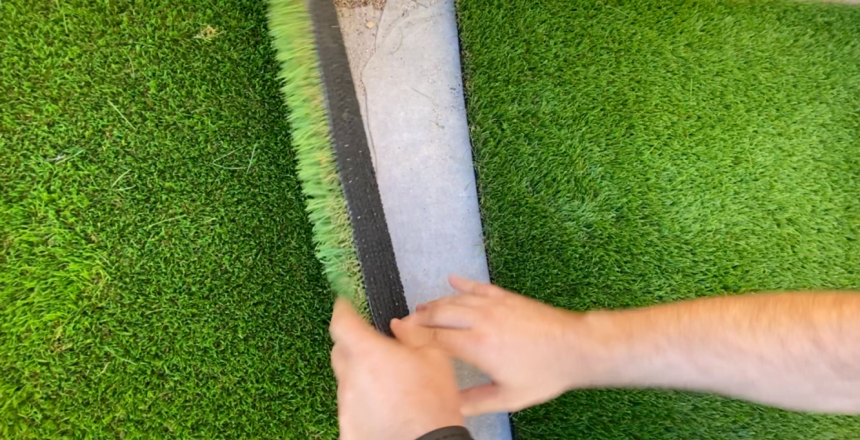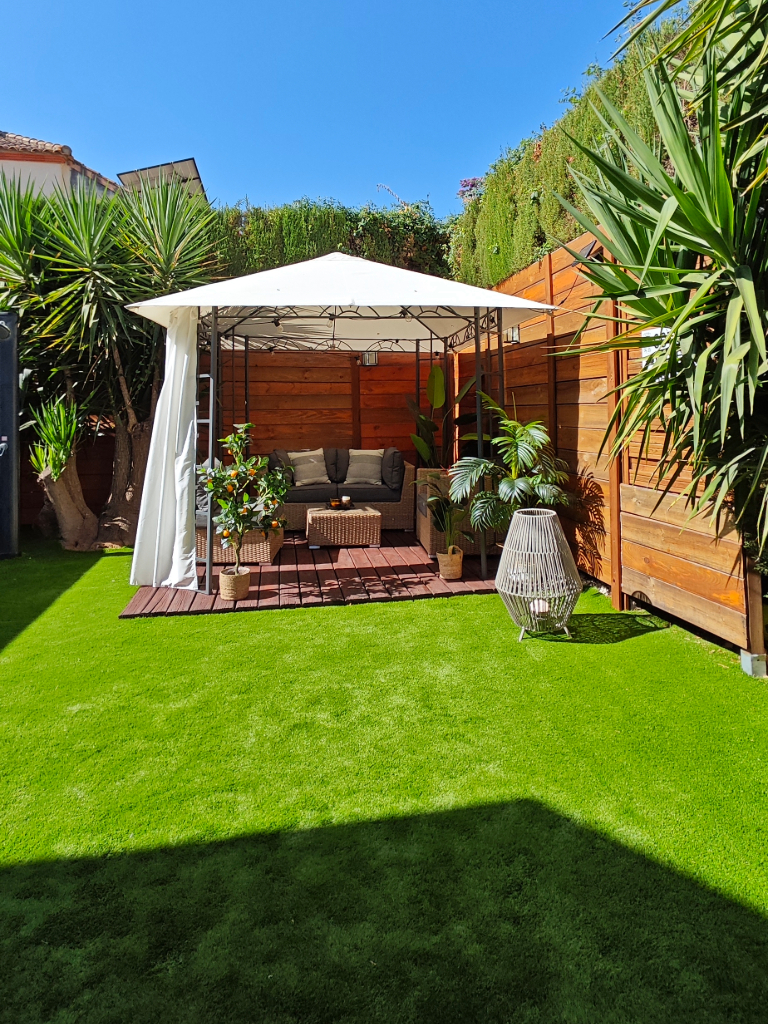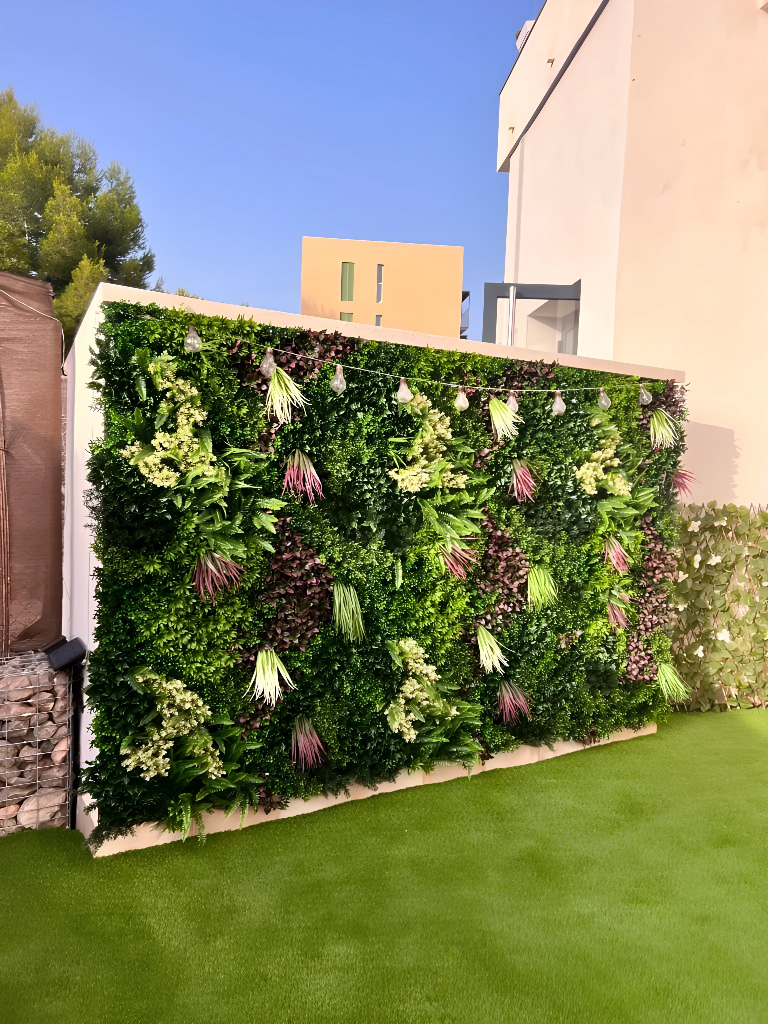How to install artificial turf above ground.

Artificial turf is an excellent option to create green spaces in your environment and give a touch of natural appearance to both small spaces and large tracts of land, without requiring excessive cost in installation and maintenance.
Some of the accessories needed to install artificial synthetic grass in soil are the following: weed control netting and nails (if in soil), jointing tape and adhesive glue. And the tools you will need: a cutter, a notched trowel, a hammer for the nails, a stiff bristle brush and silica sand if you wish. We have another article on our blog that talks more in depth about the accessories you need for installation HERE.
How to lay artificial turf on soil in 5 steps
Artificial turf can be installed on almost any surface, but keep in mind that if you are going to install it on a solid floor, such as slab, concrete and so on, you can go directly to step 3. We are going to tell you how you can perform this process properly. It requires care and dedication, but it is something that any inexperienced person can do without any problem. Whenever you have any doubt, you can consult us by clicking on the whatsapp button below.
 1- Land preparation:
1- Land preparation:
It is necessary to thoroughly clean the soil and apply an effective herbicide to prevent the weed from reappearing. Subsequently, the surface must be flattened. As mentioned above, this process, in a soil that has been firm and smooth, it is not necessary, nor is step 2. Ideally, a layer of gravel and sand should be used to help with water drainage. And then compact as well as possible.
2- Laying anti-weed netting:

Secondly, it is necessary to place an anti-weed mesh, it is an element in which we do not advise to skimp, because if you put an anti-weed mesh of little weight, it can break in a few years and stop doing its function. That is why we always work with 120gr weed control netting, so that it fulfills its main purpose, which is to prevent weeds from coming back. For this it is necessary to or fix it with nails, preferably in stages. A tip we give you in relation to the mesh, is to install it perpendicular to the lawn rolls, so that the joints do not coincide with those of the lawn.
3- Staff:
Before even buying the artificial grass, we advise you to measure the whole area and calculate how we are going to plant the different artificial lawns, taking into account that the rolls are 2m wide. If you don’t know how to do it, you can send us the perimeter measurements in a small plan and we will calculate it for you. Also taking into account the direction of the fibers, since it looks nicer with the fibers facing oneself. Then the rolls should be spread on the mesh and the edges should be smoothed, eliminates nding any imperfections. The pieces should be placed between them, keeping in mind to maintain the same distance between seams that the model has, so that the union is not noticeable.
4- Place the union band:

We have two types of bonding strips, adhesive and non-adhesive. Obviously, the non-adhesive one must have the adhesive applied to it. To join the pieces of turf, we open the cloths at the joints and we spread the bonding strip on the joints. If it is not adhesive, the glue will be applied on the weed control mesh or directly on the ground if it does not have mesh and if it is not adhesive, the glue will be applied. If the glue is a two-component glue, keep in mind that once you mix the two components, you have to apply it more or less quickly, so we advise you not to mix it until you have the strips ready. Then fold each of the pieces of grass, being careful not to stain the grass with glue and adjusting the joints well so that they are not very noticeable. If it is on soil, the surface of the lawn is nailed around the perimeter every meter or so. In case of firm ground, the nails can be replaced by the same adhesive that we applied on the strips, but directly to the ground or the mastic tape.
5- Apply silica sand:
Step 5 is touch-ups along the installation. For this purpose, silica sand is spread over the entire surface and the stiff-bristled brush is passed in the opposite direction . to the turf pile, so that when the turf is lifted, the amount of sand is equalized. Silica sand allows the lawn to have a cooler temperature during the summer, as it retains more moisture. But its application is not mandatory either, it is a little more your choice.
Finally, enjoy your new green and comfortable space, after combing it well. Don’t forget that although it is very easy to keep clean, it does require a little care, here are some tips on how to maintain it as well.
- Tags: do it yourself
Subscribe
Subscribe to Artificial Garden to stay up to date with all the news.




